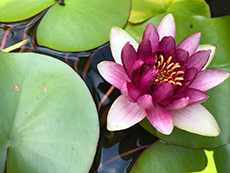



 Ki is a Japanese word typically defined as mind, spirit or heart. In oriental medicine and martial arts, the word ki refers to a subtle form of vital energy.
In our practice, ki is understood as a sense of connection and motivation that is enhanced by calmness and relaxation. This ki helps us perform to the best of our abilities in all circumstances.
Ki is a Japanese word typically defined as mind, spirit or heart. In oriental medicine and martial arts, the word ki refers to a subtle form of vital energy.
In our practice, ki is understood as a sense of connection and motivation that is enhanced by calmness and relaxation. This ki helps us perform to the best of our abilities in all circumstances.
Aikido (pronounced eye-key-doe) is a martial art of Japanese origin. The name is often translated as "the way to union with ki". Technically, students are taught to move out of the way of the main line of an attack, move into the center of action, and redirect the attacker. The art makes use of the fact that an attacker focuses their attention and movement on the person they are attacking. This potentially puts the person being attacked in a leadership position, if they know how to take advantage of it. Techniques generally are intended to result in a throw or take-down/pin of the attacker. There is no retaliatory striking and none of the techniques are designed to cause any type of injury.
In classes, students learn pre-arranged attack/defense moves and perform them with many repetitions to develop technical skill and agile, flowing movement. They are taught to safely receive Aikido techniques by properly falling and rolling away, instead of resisting. Techniques gradually progress into freer and more open forms of practice. It is a vigorous, challenging and fun way to explore the relationship between mind and body, calm and action, as well as self and others.
The insights of practice lead to a greater understanding of the contrast between leadership and domination, and between cooperation and victimization. Among the major goals and benefits are a calm mind, which can perceive things clearly, and a relaxed body, which can optimize health. Aikido training with the St Louis Ki Aikido includes the techniques and exercises of Ki Development training (Dynamic Meditation). This way of Aikido training is called Ki-Aikido - at STLKI we call this 'Mindfulness in Meditation and Martial Arts'.
Of course self-defense is an important part of Aikido. Some of our students have used Aikido arts to protect themselves and others. Children have stopped bullies from bothering them and adults have dealt with some difficult situations. Many more of our students have used their training to effectively avoid physical conflict and change the nature of a confrontation. To view a person as only an attack reduces the perspective necessary to creatively deal with conflict. The ability to focus and be clear in any situation is the best defense. It is also the best way to focus on and take advantage of the good things that come our way. In this way, our training is designed to foster a positive outlook that is appropriate in all situations.
Aikido teaches lots of rolling. Students off all ages enjoy the vigorous movement, tumbling and rolling exercises taught in every class. Everyone helps each other learn and have fun without competing. Students are taught to safely receive Aikido techniques by properly falling and rolling away, instead of resisting. This can also be a good defense against slippery St. Louis winter days.
Dynamic Meditation is the term we use for Shin-Shin Toitsu Do, which translates more directly as Mind-Body Oneness. It has also been refered to as Japanese Yoga. It was first developed as a teaching method by Tempu Nakamura, the first to teach yoga in Japan. Koichi Tohei Sensei, the founder of Ki Aikido International, used and further developed this training first to teach better Aikido, and later as a direct way of promoting physical and mental health. It is often referred to as Ki Development Training. Ki is a Japanese word typically defined as mind, spirit or heart. In oriental medicine and martial arts, the word ki refers to a subtle form of vital energy. In our practice, ki is understood as a sense of connection and motivation that is enhanced by calmness and relaxation. This ki helps us perform to the best of our abilities in all circumstances.
This training uses visualization techniques, meditation, breathing, stretching, and movement to teach how mind and body are connected and interactive. This "Ki" training works with the premise that the mind leads the body. Practice develops confidence and discipline, which leads to greater relaxation and physical stability. A light push is often used to test the stability of students in various postures and movements. This "ki test" provides a form of biofeedback, revealing the quality and depth of physical relaxation and mental calmness. Each test helps students cultivate a reliable relaxation response that can be called upon in daily life. With training, even emergencies can be met with greater calmness.
Training with posture and movement helps develop a more positive mental state, while at the same time showing how positive ideas and goals improve posture and movement. Ki Development demonstrates how a calm mind and a relaxed body are sources of strength.